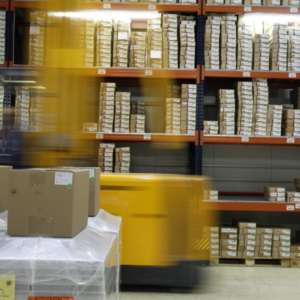These days, the outlook for international trade can turn on a dime (or a tweet). International supply chains, on the other hand, take much longer to adjust to changes, especially when it comes to China, the world’s second largest economy and the site of so much of the world’s manufacturing. However, despite the difficulties of rerouting supply chains away from China, stakeholders across innumerable industries increasingly feel they have no choice but to do so, in response to the ongoing trade war and concerns that an over-reliance on China has made companies inflexible and vulnerable to disruption.
While the Trump Administration’s tariffs may be the most immediate motivator for companies to shift away from China, it’s important to note that there are other factors at play. As China Briefing reports: “the benefits of shifting manufacturing out of China or diversifying production channels may be greater in the longer term given China’s steadily rising labor costs, mounting compliances, social insurance commitments, stringent environmental checks, and other pressures.” Concerns over intellectual property rights and the security of product design are also not without merit, and in a recent CNBC poll one fifth of corporations reported that China has stolen their intellectual property in the last year. Meanwhile, technology companies who produce products and components in China have begun to echo the Trump Administration’s concerns that the products themselves may be compromised and vulnerable to remote tampering. The CEO of one such company was quoted in Supply Chain Brain as saying that “Some clients worry that their information may be leaked through backdoors,” though he went on to say that higher taxes also influenced his decision to move manufacturing to India.
The list of tech companies shifting production out of China grows longer with the day. According to the New York Times, GoPro is moving some operations to Mexico, as is Universal Electronics. Unconfirmed reports are also circulating that Nintendo and Google are searching for new locations to make some products. In a recent survey of executives by consulting firm Bain, 42 percent of respondents said they planned to source materials from a different region, and 25 percent said they were shifting investment out of China.
Other Southeast Asian countries, India, and Mexico are are often the prime contenders for companies looking to move manufacturing, though they lack the infrastructure, logistics services, and overall stability China has spent decades developing. Even countries that are being considered as alternatives often import their own goods from China. For example, China Brief reports that Bangladesh, a major textile producer itself, imported 47 percent of its textile imports from China in 2017.
While China’s neighbors are appealing to manufacturers for their low labor costs, moving goods through these countries is often an issue, since many Southeast Asian ports can’t accommodate today’s megaships. This presents a challenge not only to importers, but to American exporters who are exploring other regional markets for their goods. As JOC reports, there is a shortage of direct ocean services to other markets, and “therefore, agricultural exporters must transship to countries such as Vietnam, Indonesia, and Malaysia through Singapore or other hubs in the region, which increases transportation costs and lengthens transit times.” Shippers who hoped that the decline in Pan-Pacific volume would lead to a drop in freight rates, are also currently disappointed, as the carriers have shown remarkable discipline in controlling capacity.
For the moment, most manufacturers are contemplating a shift with a sense of urgency, but not of crisis. The American economy has remained strong despite tariffs, and consumer confidence is high. However, many experts worry that the real test will come in the second half of peak season (August through October), when back-ordered inventory dries up and price hikes hit consumers, just in time for back-to-school shopping. Others point to slumping semiconductor sales as a warning sign, since they have often acted as a canary in the economic coal mine in the past. Torsten Slok, the chief economist for Deutsche Bank, recently spoke to this concern: “We will find out soon if the economy was strong enough to withstand this.”
Red Arrow Logistics has the scale and scope to meet the budget and schedule requirements of the largest and smallest companies alike. If we can be of assistance, please email me at liz.lasater@redarrowlogistics.com or give us a call 425-747-7914



